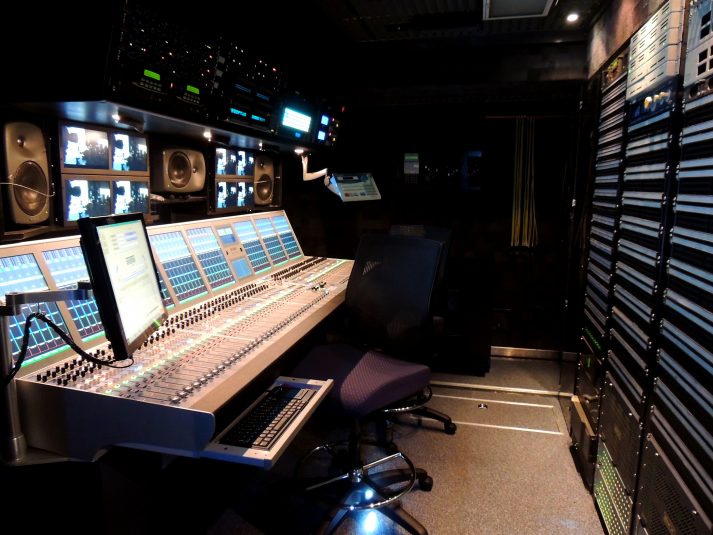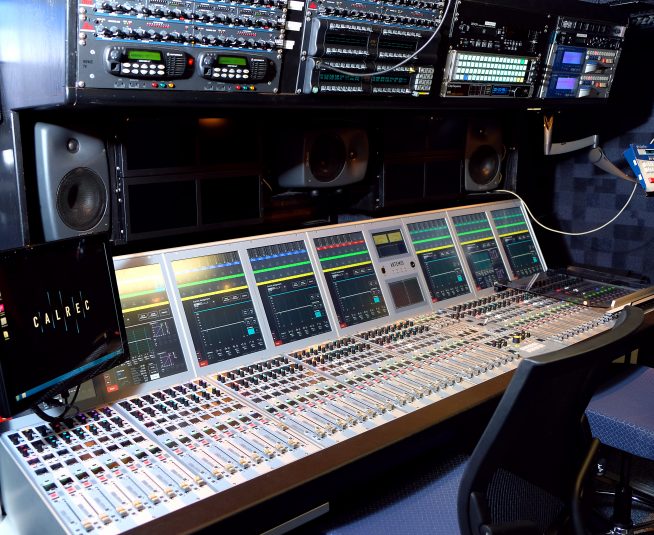DirecTV PGA Championship Coverage Offers 3 Holes in 4K, More-Complex Audio
CBS-crewed team deploys evolving workflow, new technology from F&F’s new GTX-18
Story Highlights
DirecTV consumers may not hear much different when they tune in to this weekend’s PGA Championship, produced in partnership with CBS Sports, for 4K coverage of three critical holes at Quail Hollow Club in Charlotte, NC. But behind the scenes, the workflow is changing.
Working from F&F Productions’ brand-new GTX-18 4K HDR production truck, a CBS-crewed audio team is bringing the DirecTV audio workflow for the PGA coverage more into line with CBS Sports’ own evolving workflow. This weekend, DirecTV is again covering three crucial holes — 16, 17, and 18 — in 4K.
According to Phil Adler, the veteran A1 mixing the show from the Calrec Artemis console aboard GTX-18, a newly networked array of EVS decks combined with other new technology platforms allows a more complex audio production for golf. For instance, the 64-fader Artemis Beam uses Calrec’s Bluefin2 FPGA technology with 13 Calrec Hydra2 I/O devices and eight MADI I/O units to provide fiber-based signal transport throughout the production campus.
“The legacy production workflow had EVS machines with four audio channels each being managed individually, so the EVS operators were essentially doing the mix for different parts of each shot,” Adler explains. “Channels 1 and 2 were the take-away [drive] shots, and channels 3 and 4 covered the landings on the greens. The edits between them were done by EVS operators aboard the trucks. Instead of having two faders per deck, the A1 would just be tracking the machines.
“Now that we have bigger consoles, like the Artemis, embedded routers, and other resources onsite,” he continues, “the plan is that all of the microphones covering each hole are on channels 9 through 16 of the EVS decks for each hole. Nine and 10 are the tee shots, 11 and 12 are midpoint shots, 13 and 14 are greens shots, and so on. So we have a layout that lets us mix from tape [for immediate replays] as though we were mixing the shots live.”
In addition, says Adler, CBS Sports itself has added a separate submixer for the EVS audio sources, as well as a submixer for the conventional effects sources from around the course, such as parab microphones. And the broadcaster is in the process of regularly implementing a “QC submixer,” whose sole mission is to normalize levels and EQ across all the audio sources, keeping a large array of sound sources consistent as they traverse the MADI streams on the course.
“Much of golf production has been based on legacy workflow techniques,” he points out, “but now that we have a lot more new technology at our fingertips, the workflows are quickly starting to change to reflect that. You hear that in a more complex show, in terms of the broadcast sound.”


